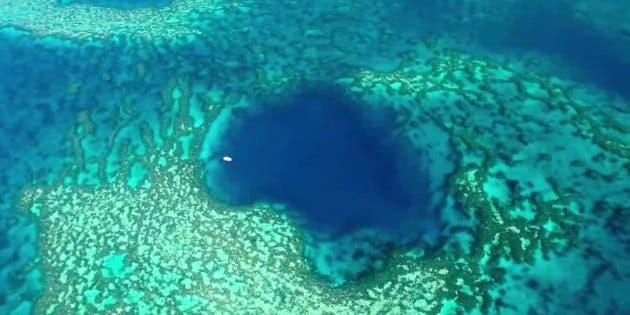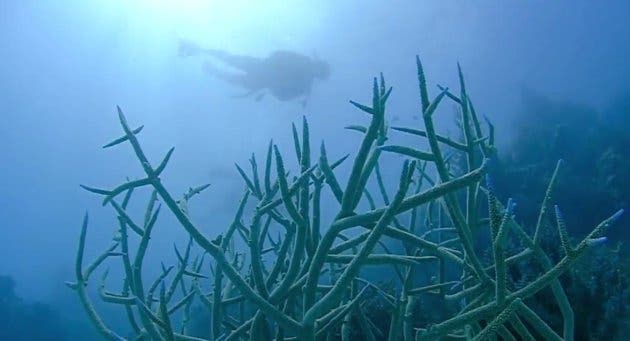A sapphire-blue waterhole was discovered by an Australian marine biologist in the Great Barrier Reef while he was casually browsing Google Maps. The blue hole, nested within one of the Great Barrier Reef’s biggest lagoons, is filled with very deep, strikingly large coral species.

That little dot is a boat. The amazing lagoon filled with coral was initially found over Google Maps. Credit: Instagram
Johnny Gaskell, a biologist from Queensland, was simply amazed when he went down in person to inspect the strange deep lagoon he had initially found over the internet.
“After spotting this deep blue hole on google maps we decided to head far offshore, out further than our normal Reef trips to see what dwelled within,” Gaskell wrote on Instagram.
“What we found inside was hard to believe considering five months ago a Cat 4 cyclone went straight over the top of it. ”
“At around 15m-20m deep there was [sic] huge Birdsnest Corals (Seriatopora) and super elongate Staghorn Corals (Acropora) both of which were among the biggest and most delicate colonies I’ve ever seen.”
A blue hole is a marine cavern or sinkhole that is open to the water’s surface. These usually extend below sea level where they can harbor underwater caves.
The lagoon’s walls were what eventually protected the coral from the cyclone, as they probably had for decades. The blue hole, which Gaskell named using his own moniker for inspiration, measures about 150 meters across and at least 20 meters deep, though the biologist adds that it still needs exploring. For comparison, the largest known blue hole, called The Great Blue Hole is located off the coast of Belize and is 124 meters deep.

Gaskell and friend dived into the blue hole to investigate what’s inside. A fabulous world awaited. Credit: Johnny Gaskell, Instagram.
The discovery was made during a bad time for the Great Barrier Reef which is currently going through a sorry state of affairs. Pollution and climate change are causing wildlife and coral populations to decline dramatically, especially at the hands of coral bleaching. About half of the coral in Northern Great Reef has already been killed at the hand of man-made global warming. Corals to the north of Cairns, which account for two-thirds of the Great Barrier Reef, are also massively affected with 35 percent to 50 percent dead or dying. If we don’t cut greenhouse emissions dramatically, and fast, these reefs “will cease to host functioning coral reef ecosystems by the end of the century,” the UNESCO World Heritage Center in Paris reports.










